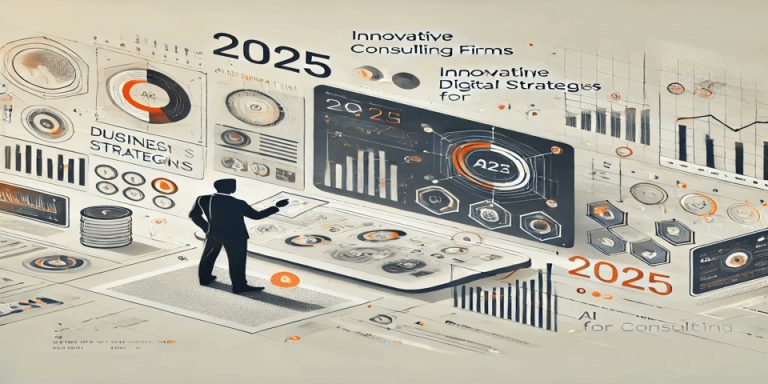Mastering Interactive User Interfaces for Business Growth: A Blueprint for Success
15 Min to Boost Business Growth with Interactive User Interfaces in 2025 In the rapidly evolving digital landscape, businesses must constantly adapt to technological advancements and changing consumer expectations. For SMEs generating significant monthly revenue, the pressure to stand out in a crowded market has never been more intense. Enter interactive user interfaces—a powerful tool that, when mastered, can propel business growth and enhance customer engagement. In this comprehensive guide, we’ll explore how leveraging interactive interfaces can unlock new opportunities for businesses and provide actionable strategies to implement them effectively. The Untapped Potential of Interactive User Interfaces Did you know that a well-designed interactive user interface (UI) can dramatically boost user engagement and conversion rates? Yet, many businesses underestimate its potential impact, missing out on opportunities to optimize their operations. Think of your UI as the bridge between your product and your customer. A seamless, interactive experience not only captures attention but also encourages users to dwell longer, explore deeper, and ultimately make that all-important purchase decision. What is an Interactive User Interface? Interactive user interfaces are designed to respond to user actions in real-time, creating a dynamic, engaging experience. They go beyond static screens by incorporating elements like animations, feedback systems, drag-and-drop features, and personalized interactions. A well-crafted UI not only enhances usability but also contributes significantly to the overall customer experience. Why Businesses Need to Focus on Interactive UIs Imagine visiting a website and being instantly captivated, not just by the aesthetics, but by the way the elements respond to your every click, swipe, or hover. This is the magic of interactive UIs. For SMEs vying for consumer attention, this level of engagement is crucial. Here’s why: 1.Increased User Engagement Interactive UIs create a more engaging environment that encourages users to interact with content, leading to longer session durations and reduced bounce rates. By captivating users, you create more opportunities for conversions. 2.Enhanced Customer Experience Today’s consumers expect personalized, seamless experiences. Interactive UIs provide a platform to tailor content delivery, making each user feel valued and understood. Happy customers are more likely to become repeat buyers and brand advocates. 3.Competitive Advantage In a market flooded with choices, those who embrace interactive design often stand out. By offering a superior digital experience, businesses can differentiate themselves, attract more customers, and build stronger brand loyalty. 4.Improved Data Collection and Insights Interactive elements often come equipped with analytics tools that offer insights into user behavior. This data is invaluable for continually refining and improving your offerings to better meet the needs of your audience. Strategies to Master Interactive User Interfaces So, how can businesses effectively harness the power of interactive UIs? Here are some proven strategies that can drive measurable results. Design with the User in Mind At the core of any successful UI is a deep understanding of the target audience. Start by conducting thorough user research to identify their preferences, pain points, and behaviors. This insight will inform your design decisions and ensure that the end product resonates with users. 1.User-Centric Design: Tools like personas and user journey maps are vital for creating a user-centric interface. By visualizing how users will interact with your product, you can anticipate their needs and design a seamless experience. 2.Accessibility and Inclusivity: Ensure that your interface is accessible to all users, including those with disabilities. Implementing features like text-to-speech, screen zooms, and alternative navigation options can broaden your audience reach. Leverage Animation and Feedback Animating transitions and interactions can make the user experience more enjoyable and intuitive. However, it’s crucial to strike the right balance—too much animation can overwhelm, while too little can feel static. 1.Microinteractions: These subtle animations provide users with immediate feedback, improving usability and satisfaction. Think of button animations, toggles, or hover effects. 2.Meaningful Feedback: Ensure that every user action receives feedback. Whether it’s a confirmation message, error alert, or progress indicator, feedback helps guide users through their journey, reducing frustration. Personalization is Key Personalized experiences can significantly boost engagement. Use data analytics to tailor content and interactions based on user preferences, behaviors, and past interactions. 1.Dynamic Content: Deliver content that adapts in real-time to user inputs and preferences. This can include personalized recommendations or adjusted layouts based on user history. 2.User Preferences: Allow users to customize their experience by saving preferences or setting themes, thus providing a sense of ownership and satisfaction. Optimize for Mobile With the majority of online interactions occurring on mobile devices, optimizing your UI for mobile is non-negotiable. Ensure that your interface is responsive, fast-loading, and intuitive on smaller screens. 1.Responsive Design: Employ a responsive design approach that adjusts seamlessly between devices and screen sizes. 2.Mobile-Specific Features: Integrate mobile-specific functionalities like swipe gestures, tap-friendly buttons, and location-based services. Test, Iterate, Repeat The process of mastering an interactive user interface is ongoing. Regular testing and iteration are essential to keep your interface aligned with changing user needs and technological advancements. 1.A/B Testing: Conduct experiments with varied design elements to see which versions yield better engagement and conversion rates. 2.User Feedback: Actively solicit and incorporate user feedback. Regular surveys and usability tests can reveal areas for improvement. Real-World Success Stories: Interactive UIs in Action Let’s look at some real-world examples of businesses that have successfully leveraged interactive UIs to drive business growth. Case Study 1: Rapid Growth through Enhanced Engagement A leading e-commerce platform integrated interactive features such as personalized recommendations and real-time inventory updates. As a result, they saw a 30% increase in conversion rates and a significant decrease in cart abandonment. Case Study 2: Boosting Customer Loyalty with Personalized Experiences A financial services provider implemented an interactive dashboard for their customers to track transactions, set goals, and receive personalized insights. This updated UI not only improved user satisfaction but also resulted in a 25% increase in customer retention. SySpree Spotlight: Transformative UI Solutions At SySpree, we specialize in creating intuitive, interactive user interfaces that drive engagement and conversion. Our team combines expertise in user research, design, and technology to deliver UIs that not only










